Table of contents
Kale ( Brassica oleracea convar. acephala var. sabellica ), also known as kale in Switzerland, contains a wide range of nutrients, including many vitamins, fiber and secondary plant substances. It tastes wonderful both raw and cooked - preferably in organic quality.
Use in the kitchen
The fine aroma of kale develops in the cool season. If the kale is left in the field for a longer period of time and is exposed to cold temperatures, more sugar is stored in the cells and the sweet-tart to spicy taste develops. Like the other types of cabbage, it has a subtly bitter aroma. Adding sweet components, a dash of lemon juice or a short blanching softens the bitter taste somewhat.
Can you eat kale raw? Is raw kale poisonous? Kale can be eaten boiled, steamed, braised, baked, but also raw, as it is not poisonous when raw. If you want to cook it, you should keep the cooking times as short as possible, as this will preserve the valuable kale nutrients.
Briefly sautéed and refined with a little vegan cream (e.g. oat cream ) or mustard , kale is very simple and tasty to prepare. Served with potatoes and fried tofu (smoked), this makes a hearty, vegan winter dish. Kale stews or casseroles with potatoes or pumpkins are also quick to prepare and extremely tasty. Kale as a soup or puree is also a possible variant. Kale is ideal as a filling for flans or tarts, as a topping for risotto or as part of a lentil curry with a little coriander . So-called "kale chips", i.e. dried kale chips from the oven, are becoming increasingly popular as a healthier alternative to chips. These can be seasoned as you wish; in addition to salt andpepper , garlic granules , paprika powder , curry or chili powder go perfectly with the green snack. By drying them for a longer period of time (40-50 °C), they can also be enjoyed raw.
Kale cooked in salt water or kale kimchi are ways of preserving it.
Recipes for kale (raw) are mainly salads, for example with fruit (e.g. oranges , tangerines , pomegranate seeds , cranberries , apples , grapes ) and nuts (e.g. walnuts , pecans ). Avocado , beetroot, red cabbage , fennel and sweet potatoes also complement kale salads well. Raw kale can of course also be mixed with other types of leaf salad. It also livens up bowls with millet , quinoa or wholegrain rice when raw. Pasta dishes with a raw kale and walnut pesto are something very special. Raw kale is also used in healthy juices and smoothies (e.g. with apples and ginger ).
Recipe for vegan kale and clementine salad
Ingredients (for 4 people): 500 g kale (raw, organic), 4 clementines , 2 cloves of garlic , juice of 1 to 2 oranges, 1 teaspoon sesame oil , 1 teaspoon maple syrup , 2 carrots , 1 avocado, 1 tablespoon tahini , 2 tablespoons rapeseed oil , some salt and pepper.
Preparation: Break the kale leaves off the stalk, pluck the green parts of the individual leaves along the stem, rinse thoroughly and drain in a sieve. Peel and fillet the clementines. Finely chop the garlic cloves. Mix the garlic, 3 tablespoons of orange juice, sesame oil and maple syrup and pour over the kale. Knead the kale well for approx. 2 minutes - this process is called massaging, which makes it softer. Leave the cabbage in the marinade for approx. 15 minutes. Peel the carrots and coarsely grate them using a grater. Halve the avocado, remove the pit and cut the flesh into pieces - marinate with approx. 2 tablespoons of orange juice to prevent them from turning brown. For the dressing, mix together approx. 5-6 tablespoons of orange juice, tahini and rapeseed oil and season with salt and pepper. Add the carrots, avocado and clementines to the kale and mix carefully. Arrange the vegan kale salad, pour the dressing over it and serve.
Vegan recipes with kale (raw) can be found under the note: " Recipes that have the most of this ingredient ".
| Not only vegans or vegetarians should read this: Vegans often eat unhealthily. Avoidable nutritional mistakes . |
Purchasing - Storage
Kale (raw) can be found in larger branches of supermarkets such as Coop , Migros , Denner , Volg , Spar , Aldi , Lidl , Rewe , Edeka , Hofer , Billa etc. and in organic supermarkets (e.g. Alnatura , Denn's Biomarkt ) in organic quality (bio). There you can buy collard greens and kale fresh, whole, cut and packaged, or frozen. In some supermarkets you can also find pre-cooked kale and kale preserved in jars. Between October and March, kale is also available seasonally and regionally at weekly markets (e.g. DA-CH). 14 Depending on the geographical location, it is available from September, with peak season being in December.
The availability of kale varies depending on the size of the store, catchment area, etc. If you are interested, click on our recorded food prices for the DA-CH countries (above under the ingredient image). There you will find current prices from various supermarkets and their price development.
Storage tips
Raw kale is best stored in the vegetable compartment of the refrigerator, where it will keep for up to a week. Can you freeze raw kale? If you have too much raw cabbage, you can easily freeze it. To do this, wash it first, dry it well and cut it into bite-sized pieces. Kale can also be frozen if it has been blanched and cooled in ice water. Its shelf life when frozen is around a year.
It is a rumor that the low temperatures in the freezer have a positive effect on the taste, similar to the cold in the field. After harvesting, the kale has completed all of its necessary metabolic processes and its taste no longer changes.
Found in the wild
A very close wild relative of kale is Atlantic wild kale, also known as Heligoland wild kale or cliff kale ( Brassica oleracea ssp. oleracea ) depending on the region. 13
Ingredients - Nutritional values - Calories
Kale (raw) is a low-calorie, low-fat food. It contains only 49 kcal and 0.93 g fat per 100 g. Carbohydrates are 8.8 g/100g. Does kale contain fiber? Compared to other vegetables, kale is rich in fiber (3.6 g/100g) and protein (4.3 g/100g). 1
Does kale contain vitamin K? Raw kale contains plenty of vitamin K (705 µg/100g). Eating 100 g of the healthy cabbage covers 940% of your daily vitamin K requirement. Swiss chard contains even more vitamin K than kale, at 830 µg/100g. 1 Dried herbs contain even more vitamin K.
Does kale contain vitamin C? Raw kale is one of the foods richest in vitamin C, with 120 mg/100g (150% of the daily requirement). Broccoli (89 mg/100g) and Brussels sprouts (85 mg/100g) are also good sources of vitamin C. Among vegetables, yellow bell peppers contain even more ascorbic acid than kale, with 184 mg/100g. 1
The folate content is significant at 141 µg/100, which makes up 71% of the daily requirement. Endive (142 µg/100g) and romaine lettuce (136 µg/100g) also provide a similar amount of this vitamin. Uncooked but dried herbs such as wild garlic contain even more folate at 551 µg/100. 1
The complete ingredients of kale (raw), the coverage of the daily requirement and comparison values with other ingredients can be found in our nutrient tables. In the article Nutrients explained you will get a detailed insight into the topic.
Effects on health
Kale is a particularly nutrient-rich type of cabbage. In addition to plenty of vitamin K, vitamin C, folate and beta-carotene (provitamin A), it also contains important minerals, chlorophyll and secondary plant substances that have a positive effect on health. 2,3
The nutrients contained in kale strengthen the bones 4 and can thus help with osteoporosis. It also has cholesterol-lowering properties that can reduce the risk of heart disease and stroke. The bitter substances contained in kale stimulate digestion and relieve pulmonary congestion, while the sulfur contained in the juice can support the healing of stomach and duodenal ulcers. 3
The plant substances in kale have antioxidant and anti-cancer effects. 3, 4,5 Kale contains various antioxidants (including kaempferol and quercetin) that have anti-inflammatory effects and help with diseases such as arthritis, diabetes, heart disease, etc. 3 The anti-carcinogenic properties are primarily attributed to the glucosinolates (also known as mustard oil glycosides) it contains, or more likely to the breakdown products produced by the intestinal microbiota. 5
It has also been found that kale seed extracts act as acetylcholinesterase inhibitors. This opens up a perspective for the medical use of kale as a source of bioactive substances for the treatment of chronic neurological diseases such as Alzheimer's, senile dementia and Parkinson's. 4,6
Dangers - Intolerances - Side effects
Kale, like other types of cabbage, can cause flatulence, especially when eaten raw. To prevent this, sensitive people should only eat small amounts of kale and, if possible, steam it briefly before eating.
The goitrogenic effect (enlargement of the thyroid) of the glucosinolates contained in kale is actually very slight. 5 However, people with thyroid problems should be a little cautious in this case and avoid raw kale or only eat very little of it. A negative effect on the thyroid usually only occurs if you have an underactive thyroid gland, eat only kale products and are also undersupplied with iodine .
Vitamin K, which is abundant in kale, plays an important role in blood clotting. Eating large amounts of kale should be avoided if you are taking blood-thinning or anticoagulant medication. 7
Folk medicine - natural healing
Traditionally, kale and the other Brassica plants were used mainly to treat gastritis and stomach ulcers. It is also known to be used for anemia, eye problems, obesity, weak bones and liver diseases. 4
Ecological footprint - animal welfare
Fresh, regional kale has a relatively low ecological CO 2 footprint of 0.2 kg CO 2 e/kg, similar to that of Brussels sprouts or rocket. If you buy kale in a jar, additional processing steps have taken place, and the amount of emissions is slightly higher at 0.9 kg CO 2 e/kg. 15 The amount of water required to produce 1 kg of kale is around 280 liters. 16
In organic farming , the use of synthetic fertilizers and chemical pesticides is prohibited. In conventional farming , too much of these agents is often used to combat certain pests (e.g. cabbage white butterfly, whitefly, cabbage root fly, etc.) and diseases (e.g. clubroot), which is why pesticide residues are found in vegetables. In a comparison of different types of vegetables grown conventionally in the EU in terms of pesticide contamination, kale fared particularly poorly. It was ranked third among the most contaminated vegetables after celery and stalked celery. 17 In organic farming, attempts are made to prevent this with well-thought-out crop rotations, mechanical processing methods and beneficial organisms. Organic kale is therefore preferable. 10
In organic farming, clover is a popular preceding crop and natural fertilizer for brassicas such as kale. The nodule bacteria that live in symbiosis with the roots of legumes bind atmospheric nitrogen and convert it into plant-available, growth-promoting nitrogen. The subsequent crop, kale, thus benefits from the nitrogen and the additional organic material. 10
Worldwide occurrence - cultivation
The origin of kale, i.e. wild vegetable cabbage ( Brassica oleracea ), is thought to be on the Atlantic coast. Early selection of cabbage varieties is said to have taken place in the Mediterranean region, which also gave rise to kale, which is why the Mediterranean coast is often found as the area of origin. 4
It has always been an important ingredient in traditional dishes, especially in the Mediterranean. Since 2010 it has been known as a "superfood", especially in the USA. 4
Cultivation - Harvest
Kale grows best between 800 and 2,000 m above sea level, but certain varieties also tolerate lower or higher altitudes. The optimal temperature range is 17-30 °C and the required rainfall is 750 mm spread over the entire growing season. Kale can also be grown well in your own garden. Here it ideally needs fertile, well-drained loamy soil with a high content of organic matter and high water retention capacity and a partially shaded location. The pH value of the soil should be between 5.5 and 7.0. 9
If you want to grow young plants yourself, plant the seeds in seed boxes or pots filled with compost. When do you plant kale? After about 6 weeks, from mid-May, you can transplant the small plants into the bed. Plants that have been pre-grown should be planted in the bed by the beginning of July at the latest. Plant the plants a little deeper in the ground than in the pot, or mound up the soil a little. A planting distance of about 40 to 60 cm is ideal. During the growth phase, a constant supply of water and nutrients through organic vegetable fertilizer is important. 8
Early varieties are ready for harvest in October, but they are usually harvested a little later. Cool temperatures (not necessarily frost) bring a sweet, mild taste. Once the plant reaches a certain level of maturity, it stops producing starch, but continues to produce glucose through photosynthesis. As a typical winter vegetable, kale can withstand temperatures down to -15 °C. When harvesting, always cut off the outer kale leaves along the stem with a sharp knife. This stimulates growth and you can harvest fresh cabbage leaves by March. In the second year, it forms flowers, the seeds of which can be used for your own propagation.
Further information
Kale ( Brassica oleracea convar. acephala var. sabellica ) belongs to the cruciferous family (Brassicaceae). The leaf cabbage does not form a closed head, but retains an open rosette of leaves - this is what the kale varieties of the " acephala group" have in common and what makes them special. Depending on the variety, the elongated leaves are more or less curled and grow on the stem. The leaf color also differs depending on when the variety is harvested - from light green to dark green to blue-green. 11 There are also reddish or red-leaf varieties of kale.
There are different scientific names. The shortened version Brassica oleracea var. sabellica is generally preferred. But Brassica fimbriata or Brassica oleracea var. fimbriata (Miller) are also recognized names. 12
Be careful with the name kale, which can also be a different variety: Brassica oleracea convar. acephala var. selenisia . This is also known as parsley cabbage or plumage cabbage. Varieties that are very closely related to kale (without head formation) are black cabbage (var. palmifolia ), marrow stem cabbage (var. medullosa ) and leaf cabbage (var. viridis ). 13
Alternative names
for curly kale are known depending on the region under the following synonyms: brown kale, spring kale, winter kale, curly kale (curly cabbage), cabbage, slit cabbage, Buren cabbage, leaf cabbage, stalk cabbage, etc. Variants (sometimes also varieties) with high stems are called Oldenburg palm, Frisian palm, Lippian palm or Lippian brown kale, etc. Incorrect spellings such as Grühnkohl creep in.
In English, kale is known as kale, curly cale, curled kitchen kale or Scottish kale. Collard greens, a very close relative of curly kale, are known as collard or collard greens.
Keywords for use
Kale is used outside of cooking and medicine for biomonitoring as a bioindicator for environmental pollution. It can provide information on the presence of pollutants such as polycyclic aromatic hydrocarbons (PAHs). 10 Kale is also popular as an ornamental plant in some gardens, similar to ornamental cabbage.

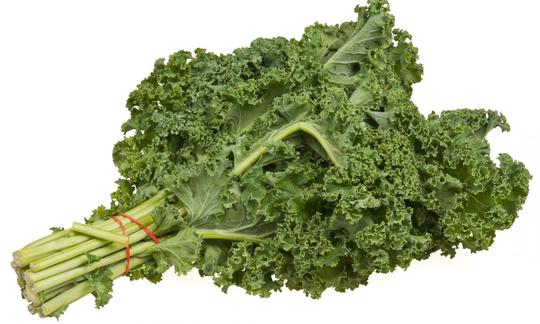

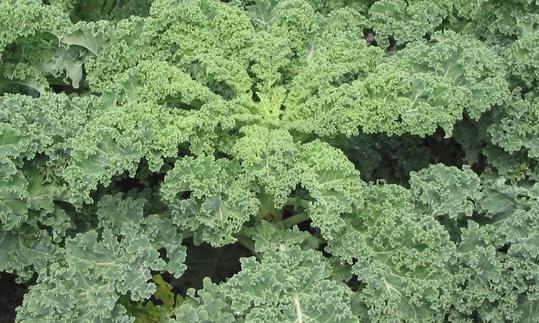

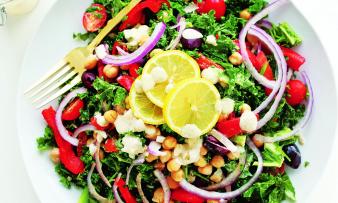
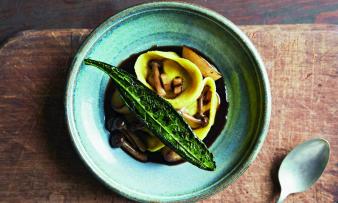
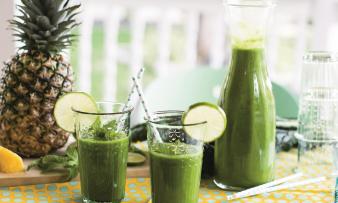





Comments